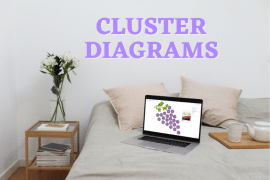
The benefits of customer journey mapping help in delivering the right type of product or service. It started back in 1985 as a visual mind map of what the customer experience would look like. Ron Zemeke and Chip Bell are credited with the customer experience mapping, which helped to map out customer expectations. These customer expectations range from the customer’s experience and interaction with the customer touchpoint. It began as a manual process that you now easily create with the right customer journey map templates.
It can appear as a visually appealing flow chart diagram, but it is a business mind map that everyone should use. These days customers are expecting more than just a good product or service. The customer’s experience now ties in with the customer’s expectations and a smooth overall flow and process. Let’s take a look at the elements you include in a customer journey.
What is a customer journey map?
It all starts with taking customer personas, such as a buyer persona, and following them on the end-to-end journey. Each step is known as a customer touchpoint which is part of the customer’s experience.
For example, the buyer persona moves through each customer touchpoint, such as finding the client’s website or buying a product. How the customer interacts and finding where the major issues can be is all part of the customer journey mapping.
This is one of the primary benefits of customer journey mapping, as you see everything in front of you. It’s not just finding issues with the customer’s experience but ensuring it’s a well-rounded journey. For example, increasing social media usage and engagement is part of the overall strategy. Or make sure to track the different interactions with your brand and various customer personas.
Doing this right gives one of the major benefits of customer journey mapping, which is increasing customer engagement and sales.

What are the 5 elements of the customer journey?
The best way to understand the five different phases of the customer journey is with a digital mind map. This will help to visualize the flowchart diagram which is included in a customer journey.
1. Awareness
This is the first time a customer interacts with your brand. There is a prerequisite of customer expectations, such as customer service and customer support. Consider it the first impression for a customer. Here one uses customer journey mapping tools to how they can meet your brand for the first time. This can be through an advertisement, social media, or even a recommendation. You’re looking here at where the customers enter.
2. Consideration
Your customer interacts just a bit more and starts to consider making the purchase of the product or service. This is where you can need to assess the customer’s feelings, as well as review other products. They check pricing, quality, reviews, and how others perceive your brand. That means interaction with your brand needs to be always on point. At any moment in this phase, a customer may be swayed to a competitor due to the customer journey.
When using customer journey map templates, have a breakdown of all the customer touchpoints you have here. Here you may look at where customers may exit and work to block that.
3. Purchase
The purchase is finally made, and many assume the customer’s experience ends here. In fact, this has its own breakdown of what the purchase cycle looks like. With the right diagramming tool, you can build out this subset to show everything from purchasing to shipping. Customer service and customer support may be used here and reviewed as part of the customer’s experience. This part of the customer journey map is a visual of whether customers move to the next step.
4. Retention
Again this part is all about keeping the customer’s experience perfect. Even if the customer service was great, the product arrived on time, or the service was satisfied, there’s still more. There needs to be additional follow-up through the proper channels, such as email or social media. Feedback needs to be requested, and engagement here is at the highest level. You have a customer who went with your product or service but decided to leave satisfied, making them a target customer.
5. Advocacy
If you’ve done a proper customer journey map and have hit the customer’s expectation, they may hit this stage. This is where you want all your customers to land as they promote your brand for you. They go on social media and help push your product or service or leave great reviews for others. They become your marketing outreach team, and it’s great to track this with the right customer journey map templates.
How to create a customer journey map
Now that you understand what will go into a customer journey map, it’s all about getting it built. It’s best to use a diagramming tool or digital mind map tool such as Mindomo to easily work on it. Take the five steps of the customer journey map and make their own sections as it looks like below.

Keep in mind that customer journey map templates can be customized to your needs, but we kept some common options. You want to get into the customer’s feelings and see how they feel and act. This visual representation is a mix of a business mind map and a flow chart diagram. It acts like a business mind map because we record the necessary teams involved in each section. In addition, it’s actionable for business improvement.
Then it’s all about showing the whole user flow through each section and their various paths. Remember, this map is visual, and you need to make it work for you. That means the above is only a customer journey map template. Many consider not following such a formal way at the start and look more at the customer themselves. That means looking at what their motivations are in the first place that lead to a purchase in the end. A good customer journey map will always help to show that journey for the business.
Keep it smart, simple, and creative!
The Mindomo Team






